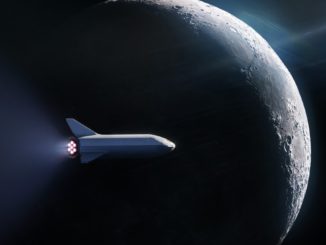SpaceX successfully launched its Bandwagon-4 mission from Cape Canaveral Space Force Station on November 2, 2025, at 1:09 a.m. EDT (0509:59 UTC). The Falcon 9 rocket carried a diverse range of payloads, including a data center demonstration backed by Nvidia, a precursor to Vast’s future commercial space station, and advanced artificial intelligence-powered weather satellites.
This mission marks the fourth multi-customer flight within SpaceX’s small satellite ride share program, which also encompasses the Transporter series. Bandwagon-4 is designed to deliver spacecraft to a mid-inclination orbit and represents the 18th mission of its kind.
Weather conditions were highly favorable, with the 45th Weather Squadron predicting a 95 percent chance of successful liftoff, despite minor concerns regarding cumulus cloud interference. Following its ascent, the Falcon 9 first stage booster B1091 targeted a landing at Cape Canaveral’s Landing Zone 2, making it the 15th successful touchdown at this site and the 528th Falcon 9 booster landing overall.
Innovative Payloads on Board
The primary payload for this mission was the fifth Korea 425 satellite, developed by South Korea’s Agency for Defense Development (ADD). This satellite is part of a reconnaissance constellation that has previously included sensitive military satellites. Due to this, SpaceX has opted to conclude live launch coverage before payload deployment in previous missions.
In addition to the Korea 425 satellite, the mission included Vast’s Haven Demo spacecraft. This California-based company is utilizing the launch to test critical systems related to its upcoming commercial space station, Haven-1. Vast aims to launch Haven-1 no earlier than May 2026 with a crew of four astronauts for a two-week mission.
The mission also featured the Starcloud-1 satellite, a project from a defense and space manufacturing startup. This satellite, weighing 60 kg (132 lb), carries the Nvidia H100 GPU, which is being hailed as the first data center-class GPU deployed in space. Philip Johnston, cofounder and CEO of Starcloud, emphasized the environmental benefits of space-based data centers, stating they could potentially save significant freshwater and carbon resources compared to terrestrial alternatives.
Global Collaboration and Future Prospects
German-based Exolaunch played a key role in manifesting and deploying 13 of the 18 payloads on this mission, which included satellites from various international partners. Among these were three synthetic aperture radar (SAR) satellites from ICEYE and Space42, as well as four pico satellites from Turkey’s Anadolu Ajansı. Additionally, Fergani Space, another Turkish company, deployed its second satellite, FGN-100-D2, contributing to a constellation aimed at providing GPS-like capabilities for Turkey.
As the space industry continues to evolve, this mission exemplifies the growing collaboration among private and government entities in developing innovative technologies for space exploration and utilization. The successful launch of Bandwagon-4 not only demonstrates SpaceX’s ongoing commitment to advancing access to space but also highlights the potential for commercial ventures in orbit.
Overall, the launch of Bandwagon-4 represents a significant step forward in the integration of advanced technology in low Earth orbit, with implications for both military and civilian applications. The mission’s diverse payloads underscore the increasing role of space-based solutions in addressing global challenges.







